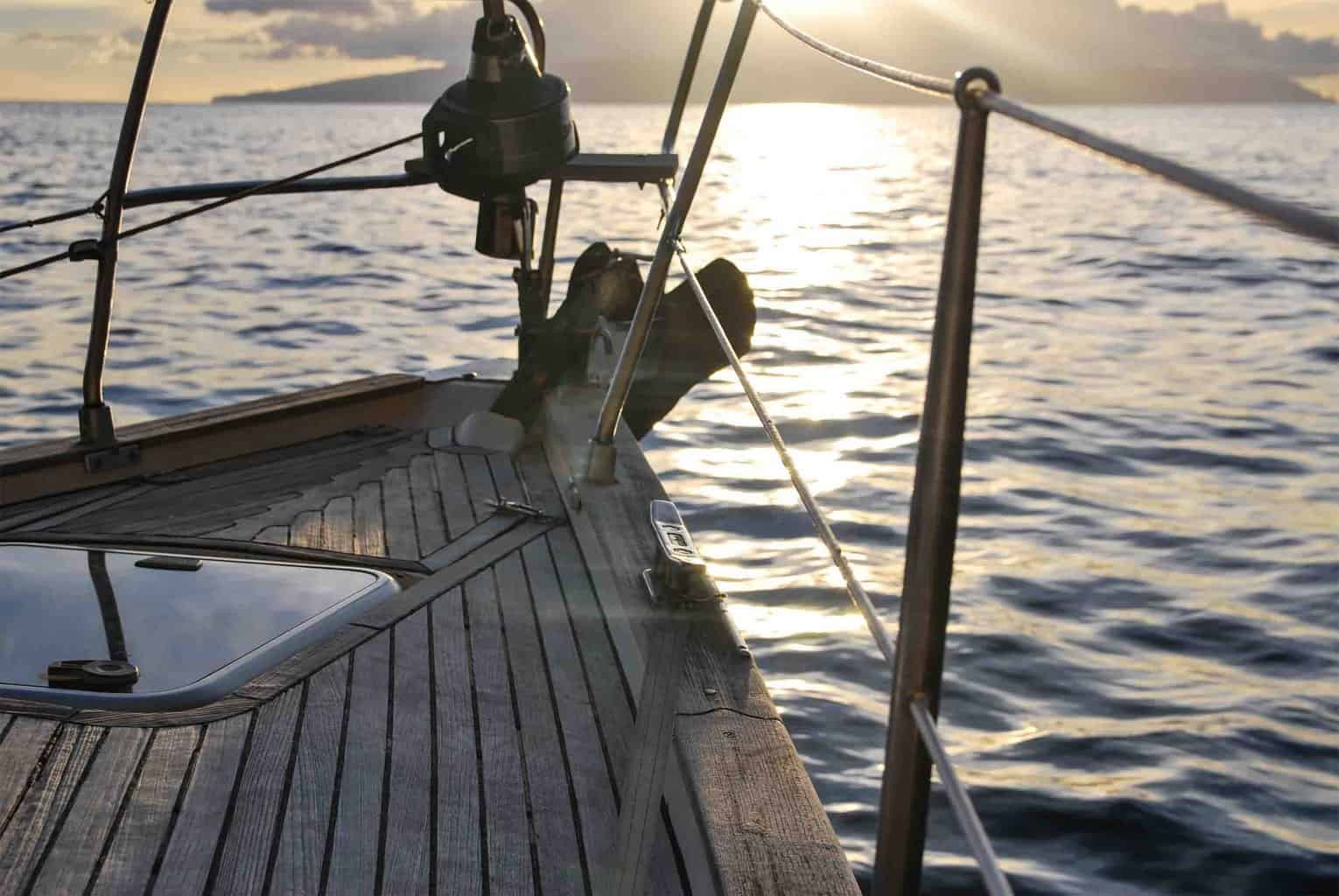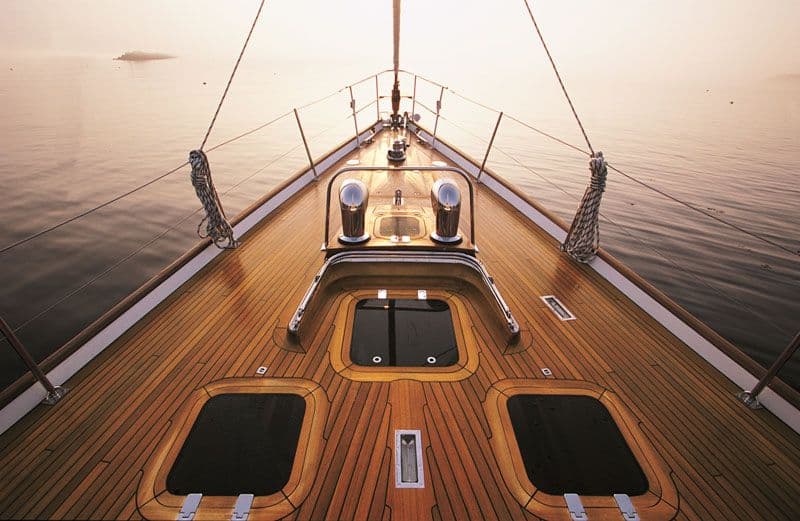Boat Hatches are found on nearly all boats of any size, and while they are essential pieces of equipment, they are often given little attention. They are installed to provide access to compartments below the deck, ensuring these areas remain dry and secure. Most boat hatches are made from high-quality Acrylonitrile butadiene styrene (ABS) plastic to withstand the harsh marine environment. On the other hand, Hatch latches and locking mechanisms are crucial for maintaining the functionality and security of a boat hatch. In this blog post, we will explore the different types of boat hatches and hatch latches, factors to consider when buying them, installation and maintenance tips, and suggestions for enhancing hatch safety and security. To learn more about Boat hatches and hatch latches, check out BoatHut’s hatches and ventilation section.
Types of Boat Hatches
Boat hatches come in various sizes and styles, with different materials used in their construction. Some common types of boat hatches include:
Deck Hatches: Deck hatches are the most common type of hatch and are usually found on a boat’s deck. They provide access to the cabin, ventilation, and allow for natural light. Deck hatches typically come in two types: fixed and adjustable. Fixed hatches are permanently sealed and offer a watertight seal, while adjustable hatches can be opened or closed quickly. Some key features of deck hatches include their size, shape, and materials. They are usually made of aluminium frames and polycarbonate transparent panels; these can be oval, round, or square, depending on the boat’s design.
Access Hatches: Access to tighter spaces to smaller spaces on the boat, such as tanks, electrical hardware, engine area and storage compartments. They typically have stays or friction hinges, a watertight seal and can be opened or closed with a latch. Access hatches come in various sizes and shapes, and some key features include their materials and locking mechanisms.
Escape Hatches: Escape hatches are designed for emergencies such as fire or accidental flooding and act as a quick escape route. They usually have a watertight seal and can be opened easily without any complication. Escape hatches come in various shapes and sizes, and their key features include materials and locking mechanisms. They are usually made of polycarbonate and aluminium and come with a latch or lever that can be operated from the inside.
Storage Hatches: Storage hatches are designed primarily for storage purposes and are often located in areas of the boat that are not frequently used. They can be opened or closed quickly and usually have watertight seals. Storage hatches come in various sizes and shapes, and some key features include their materials and locking mechanisms. They are typically made of plastic or aluminium and can be locked with a twist or push-button locking mechanism.
Key Features and Uses of Each Hatch Type: Each hatch type’s key features and uses depending on the boat’s design and usage. Deck hatches provide access to the cabin, escape hatches are designed for emergency use and occasionally used for storage. Access hatches, on the other hand, provide access to smaller spaces in the boat and are usually located in areas that are not frequently used. The materials used to make each hatch type and their locking mechanisms also vary, depending on their specific use and location on the boat.
Boat Hatch Latches and Locking Mechanisms
Boat hatch latches are critical for ensuring hatch functionality and can also help to provide security for your vessel. They prevent hatches from opening unexpectedly in rough seas and ensure they are tightly closed to avoid water intrusion into the boat’s cabin. The different types of hatch latches include:
Twist Latches: These are easy to use and operate by twisting a handle to open and close the Hatch.
Slam Latches are spring-loaded and close automatically when the Hatch is slammed shut. They are perfect for hatches where quick and easy access is needed.
Compression Latches: These latches tighten down and hold tight with a turn of a screw. They are ideal for hatches located in areas that experience harsh weather conditions.
Choosing the right hatch latch will depend on the type of Hatch, its location, and the boat’s intended use.
Factors to Consider When Buying Boat Hatches and Latches
Image source: The Boat Butler
When buying boat hatches and hatch latches, it is essential to consider several factors, such as:
CE Ratings
All boats manufactured or sold within the European Union need to be compliant with the CE Certification. As a part of this, your vessel will have ratings for latches that determines where on a boat hatches can be safely installed. Ensure that you are familiar with these guidelines to make sure your hatch is compliant.
Boat Size and Hatch Dimensions
When choosing a boat hatch, it’s essential to consider your boat’s size and the hatch opening’s dimensions. A hatch that’s too small may not provide enough ventilation, while a hatch that’s too large may not fit properly and could compromise your boat’s structural integrity.
Marine Environment and Exposure to Elements
Another important factor to consider is the marine environment and exposure to elements. A hatch exposed to salt water and harsh weather conditions requires materials that can withstand these elements. Choosing high-quality materials such as stainless steel or anodized aluminium hatches can last decades without rust or corrosion.
Security and Anti-Theft Features of Latches
The safety and security of your boat are paramount, and having a high-quality locking mechanism is crucial. Consider selecting latches that feature anti-theft measures, such as keyed locks. A more secure latch can deter potential thieves and give you peace of mind when leaving your boat unattended.
Ease of Use and Accessibility
Ease of use and accessibility are vital when selecting your boat hatch and latch. Ensure the Hatch is easily operable and provides adequate access to the boat’s interior.
Installation and Maintenance of Boat Hatches and Latches
Proper hatch installation and maintenance are critical to ensure they function correctly. Before installation, ensure that the Hatch and frame are both debris-free and the surfaces flush. Use a sealant to prevent water intrusion and leaks. Lubrication of hatch latches is crucial to keep them functioning correctly. Regular cleaning of the Hatch and latches will help prevent damage due to saltwater corrosion.
Enhancing Hatch Safety and Security
To enhance safety and security, following hatch safety guidelines for boat occupants and ensuring that hatches are locked securely is essential. Adding secondary locks can also provide extra security, preventing unauthorised access to below-deck compartments when the boat is not in use. Install weather seals around the hatch frame to prevent water intrusion and leaks.
Finding the Right Boat Hatches and Latches
Researching reputable hatch manufacturers is essential when selecting the right boat hatches and hatch latches. Read user reviews and recommendations to help make an informed decision. Consider quality and budget when making a purchase.
Frequently Asked Questions (FAQs) about Boat Hatches and Hatch Latches
How do I measure a boat hatch for replacement?
You can measure the distance between the inside edges of the hatch frame and the hole size, which will determine the size of the replacement hatch. However, most hatches will provide you with the cut-out size and the overall dimensions needed for a replacement.
Can I retrofit an old hatch with a new latch?
Many latch manufacturers make products that are universal and can be adapted to fit existing hatches. However, this is not always the case, so it’s important to check the latch and frame measurements before making a purchase.
Are there specific latches for marine use?
Yes, latches designed specifically for marine use are available. Marine-grade latches are made from corrosion-resistant materials to withstand harsh sea conditions. Look for durable stainless steel or alloy options. Also, ensure they have a waterproof seal to protect against water intrusion and leaks.
What to do if a boat hatch is leaking?
Check for loose screws or bolts that may be causing the hatch frame to move. Tighten these and inspect the seal around the hatch frame. If this does not stop the leak, consider replacing the weather seals or investing in a new latch system.
Conclusion
Boat and hatch latches are essential for a safe and functional boating experience. Proper installation, maintenance, and security should be considered when selecting and maintaining these components. Following safety guidelines for occupants and installing weather seals can help to prevent water intrusion and leaks and contribute to hassle-free boating. Remember, investing in quality boat hatches and hatch latches will provide longevity, ensuring that you have many boating adventures to come.



